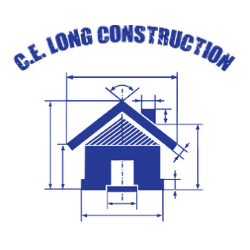
In the beginning, there was an ultimate beginning, one that created everything in your world around you – your house plans.
Just as your entire house was planned before it was built, planning is required when remodeling or renovating an existing home. So in this guide, we’ll start with how to plan.
1. How to Decide What You Want to Change and Improve
To get started, you’ll want to answer a few questions about you and your home. They are as follows:
Note: You may want to actually pull out a pen & paper to write your answers.
Are there any safety issues you’d like to address?
Are there any electrical issues, a leaking roof, shower/tile leaks, rotten wood on your deck, or something else that needs immediate attention? If so, plan for this and lead with these issues first when talking to your contractor.
What would give you more enjoyment or add comfort to your home?
Use your imagination here because there are limitless options for what this could be, big and small.
Do you think knocking that wall down would open up the living area and let the house flow better? Maybe you just want a much bigger sink in the kitchen. You might want to add electric fireplaces to the kitchen and master bath (this is beginning to be a huge trend) or something else.
Your options are only limited by your imagination.
Are you planning to sell your home in the near future?
If so, you’ll want to only have work done to the home that will increase its value immediately.
This includes but is not limited to opening up the living space, installing a new front door, and updating the kitchen and bathrooms. These improvements bring the best immediate return so they are perfect for those looking to sell their home for top dollar.
If you’re not selling, do you plan to retire in your current home?
If you answered “yes,” there are a few things you may want to do to your home so that you will enjoy and access every part of the home for years to come.
A range of ideas could include anything from installing a walk-in shower if you currently have a tub to adding an addition with a master suite so you don’t have to worry about negotiating stairs and risking injury.
What would you upgrade or add?
A second bathroom sure could come in handy during those busy mornings when everyone is trying to get ready for the day. Picking up a curling iron that someone left on should only be reserved for those that leave the lid up or don’t use their turn signals.
Maybe you’ve been wanting to finish your basement, add a den, or install frameless glass doors for your shower. Perhaps it’s time for heated tile in the bathroom for those cold winters.
Think about what you want to experience in each room you are planning to have work done. What do you want to feel when you walk into your kitchen? Your living room? Bathroom?
Conversely, are there any issues you experience that you’d like to eliminate? Does the hot water take so long to show up that you think it’s stuck in traffic?
When planning, focus on what will make your quality of life better.
Are there areas of the home that could be more efficient?
New windows, siding, insulation, lights, and heat pumps are things that will pay for themselves over time. They will also add value to your home and make it a more comfortable place to be with your family.
Do you want to remodel or renovate simply because your home needs to be updated?
If your home needs to updated, consult with your contractor and peruse the internet for inspiration. (Check this out.)
There are timeless styles that you can use in your remodel design that will breathe life into your home for generations to come while adding enjoyment and value to the home should you ever wish to sell. (You’ll want to consult with your contractor on what styles to go with should you choose this route. But, we will talk a bit about this later in this guide.)
2. Building a Budget: What to Expect When You’re Prospecting
The next step is to determine a budget for your upcoming project. Using your answers from the first portion of this guide will make this much easier.
Based on your answers from earlier, you should be able to clearly communicate your ideas, needs, and wants regarding your upcoming project to your contractor. They will VERY likely wish to also take a look at your home and gather more information so they have their own idea of the condition of your home.
This will help them give you a more accurate estimate for the work you want to be completed, giving you a better idea of where your budget and home stand.
ProTip: Begin contacting contractors 3 to 6 months before you expect the work to be completed. If you are already inside this window of time. It is not too late. Start right now.
3. Hiring the Contractor that is Right for You
Hiring the correct contractor will make or break your remodel or renovation experience. Don’t only consider cost estimates in terms of selecting a contractor.
Take these factors into account as well:
- Years of experience – A company that has been in business for many years is a safer bet than someone who is new to the industry.
- Contracting License – You want to make sure that the contractor you are talking to is qualified to do the work they claim they can complete and are licensed to do so.
- Insurance – All contractors should have liability insurance for the type of work they perform.
- References and Community – Who can vouch for them? What do people say about them online? Check out their social media to see what kind of work they post and how they interact with their community.
- Website – does their site look like it was built when gas was a $1.15 a gallon? If so, you might consider finding another contractor that has a more contemporary vision for their business and more importantly, for your home.
- Payment Schedule – A construction company or contractor worth their salt normally won’t ask for full payment upfront. It’s important to understand how the payment schedule will work so you are never in breach of contract, ensuring that your project will remain on schedule. Additionally, some contractors may have useful contacts for you should you decide to finance the project.
4. Determine Your Timeline
Once you have a contractor and a budget, it is a good idea to fully understand the timeline of the work you wish to be completed.
The timeline will most likely already have been mentioned by your contractor when you were getting to know each other or while they were putting together your estimate.
If not, communicate with your contractor to get the best idea of when the project will be completed. You might have a holiday or occasion that you would like to ideally have the house ready for. If you plan enough ahead of time, you are giving your contractor a better shot of making that happen for you.
Things to consider that can affect your project’s timeline:
- Holidays that your contractor will take off
- Shipping and delivery of materials
- Time to clean project area
- Weather
- Availability of certain products
5. Plan and Pack
Now that the planning is coming to a close, its time to get ready for the project to begin! This will involve temporary adjustments in your home in order for the work to be done.
If you can completely do without the living space occupied by the remodel or renovation, great! But, that isn’t always the case.
For example, if you are remodeling your kitchen and don’t want to eat out every night you can set up a temporary kitchen.
A place that has running water for washing dishes and electrical outlets for smaller appliances is best. Typically a laundry room or basement are good options.
You’ll want to pack everything that you don’t absolutely need and stick with the essentials.
Staying with the kitchen remodel example, keeping only a few plates, glasses, and pieces of silverware while packing the rest will keep the clutter in your temporary kitchen to a minimum.
A Few Tips:
Don’t be afraid to ask questions. This is your home and you deserve to be in the know.
With that said, do your very best to stick with the original plan. Changing your mind halfway through a project can cause many issues and add time needed to reach completion and will likely offend your budget as well.
Lastly, expect the unexpected when remodeling or renovating. Even the most detailed plans can be temporarily be foiled. Don’t let this get you down. Be prepared for delays and unforeseen issues by adding a few extra days to your total timeline.
Typically, a good contractor will try to under-promise and over-deliver so as to manage expectations and give themselves the best chance at doing their best work for you, which is also important to keep in mind. They too know to expect the unexpected. Most remodels and renovations are not cut and dry. There can be an unanticipated leak here or a rotten board there that will genuinely need to be addressed.
Working with your contractor and using clear and consistent communication once your project is underway is a great way to stay up-to-date with the status of your home and what expect next.
Thank you for reading!
If you learned something in this guide or found something that could be useful to others, please share it with them!
Have a question for us that we didn’t answer in this article? Message us on social media or contact us here.
Have a comment? Leave it below!
Thanks again for spending this time with us today!

